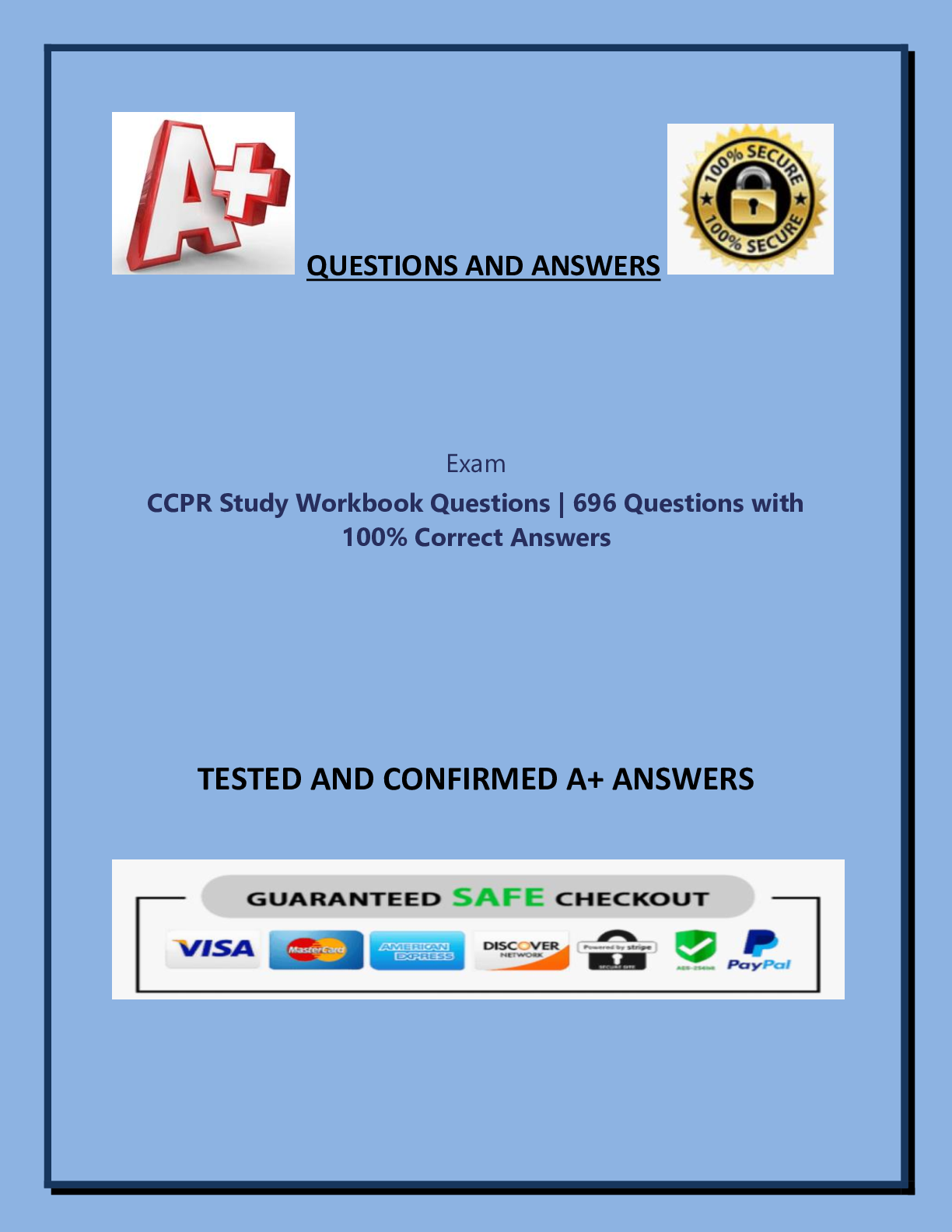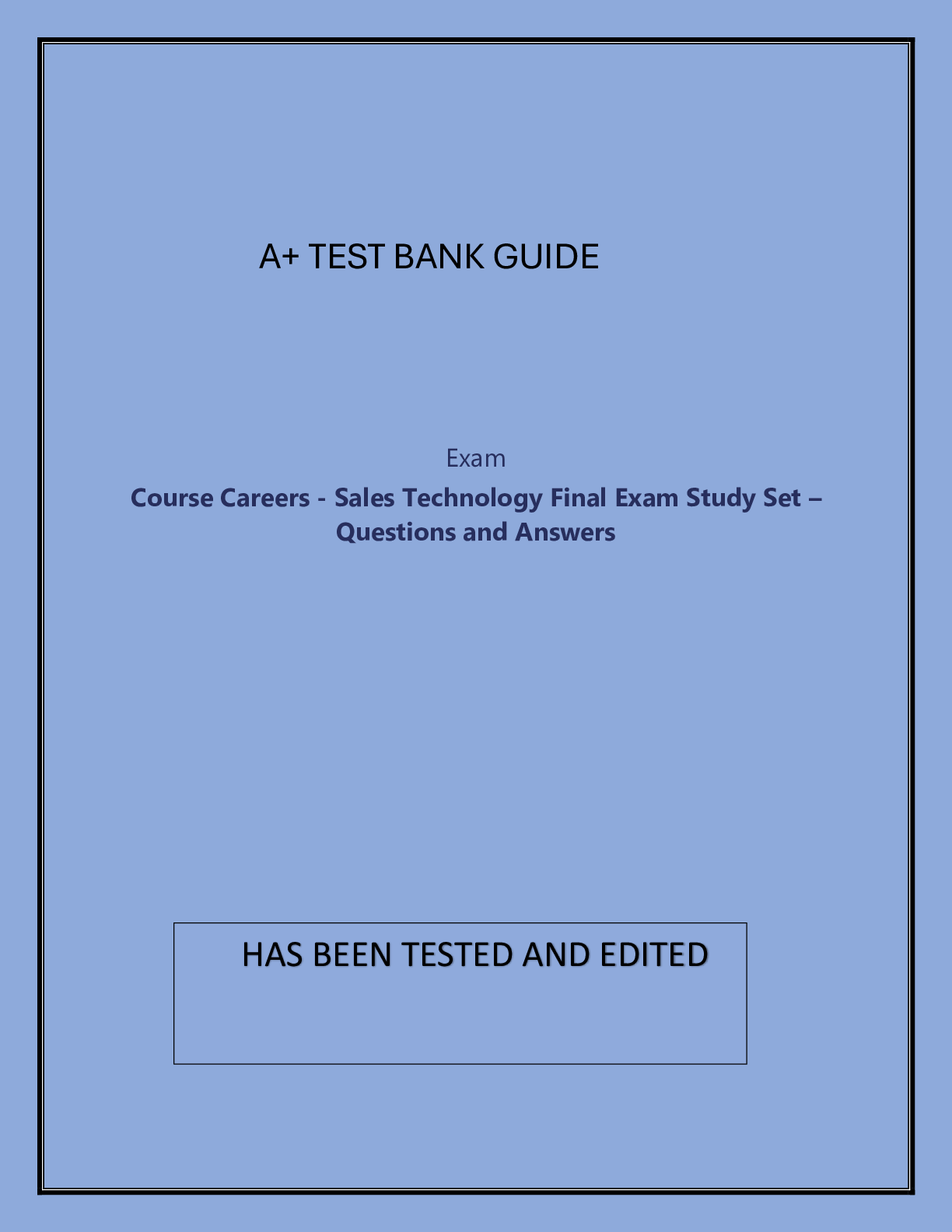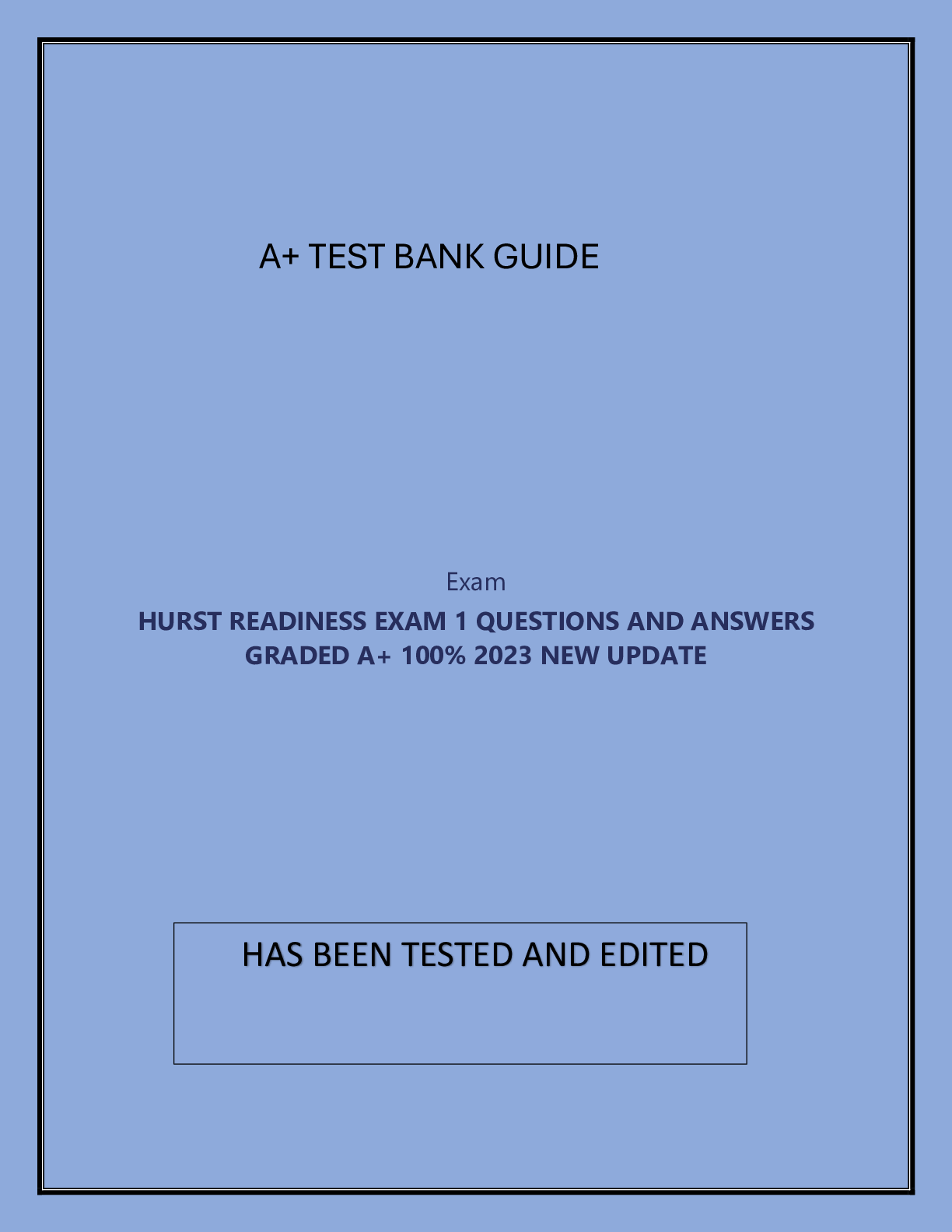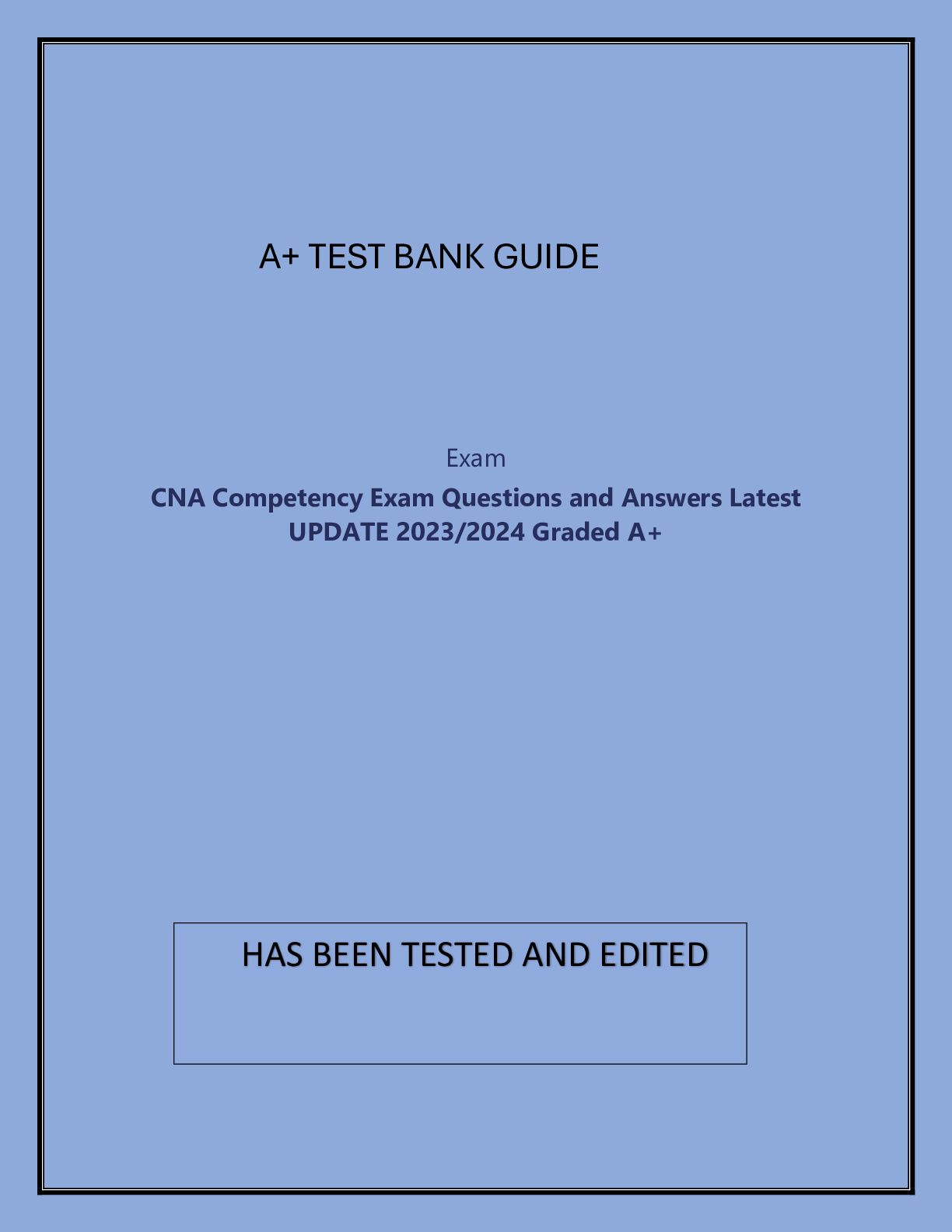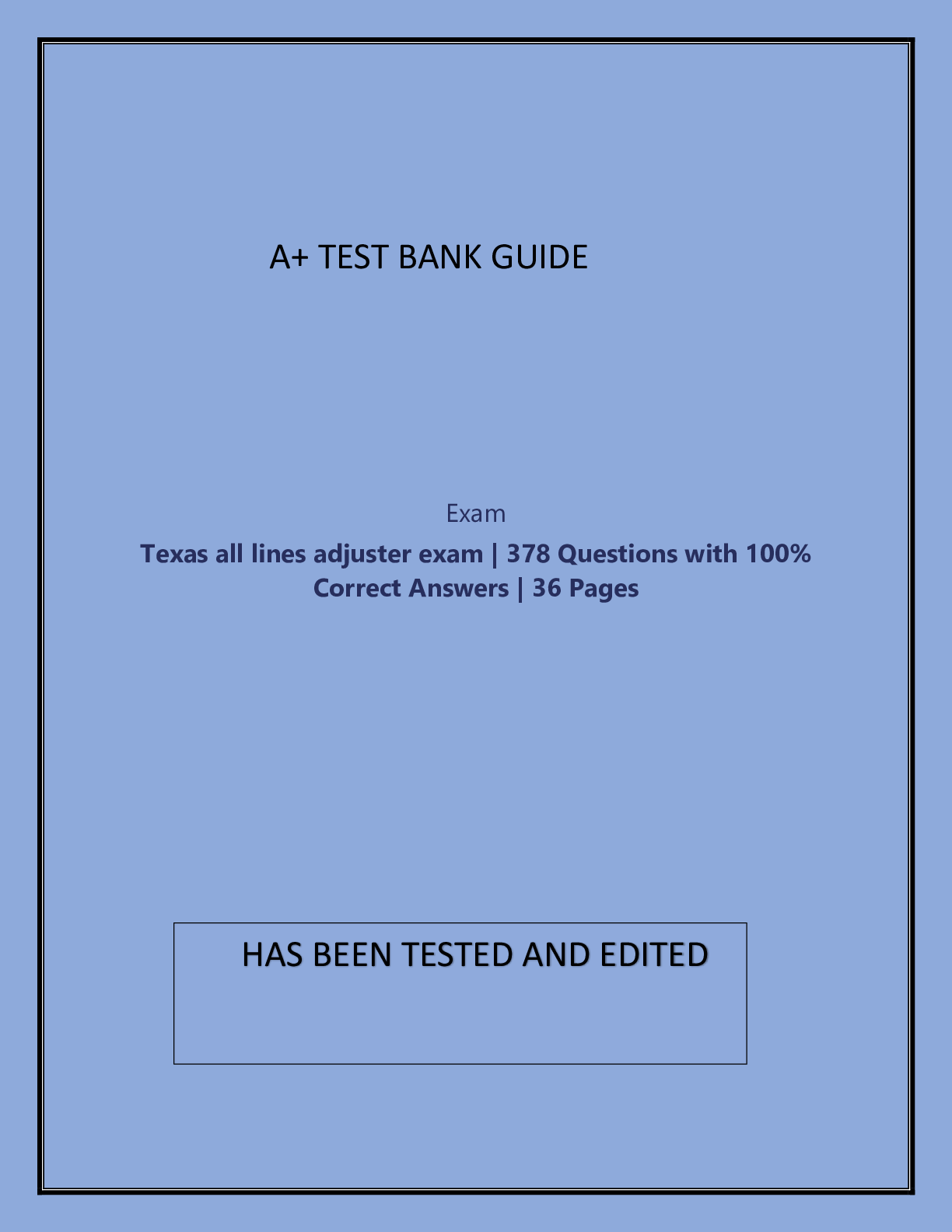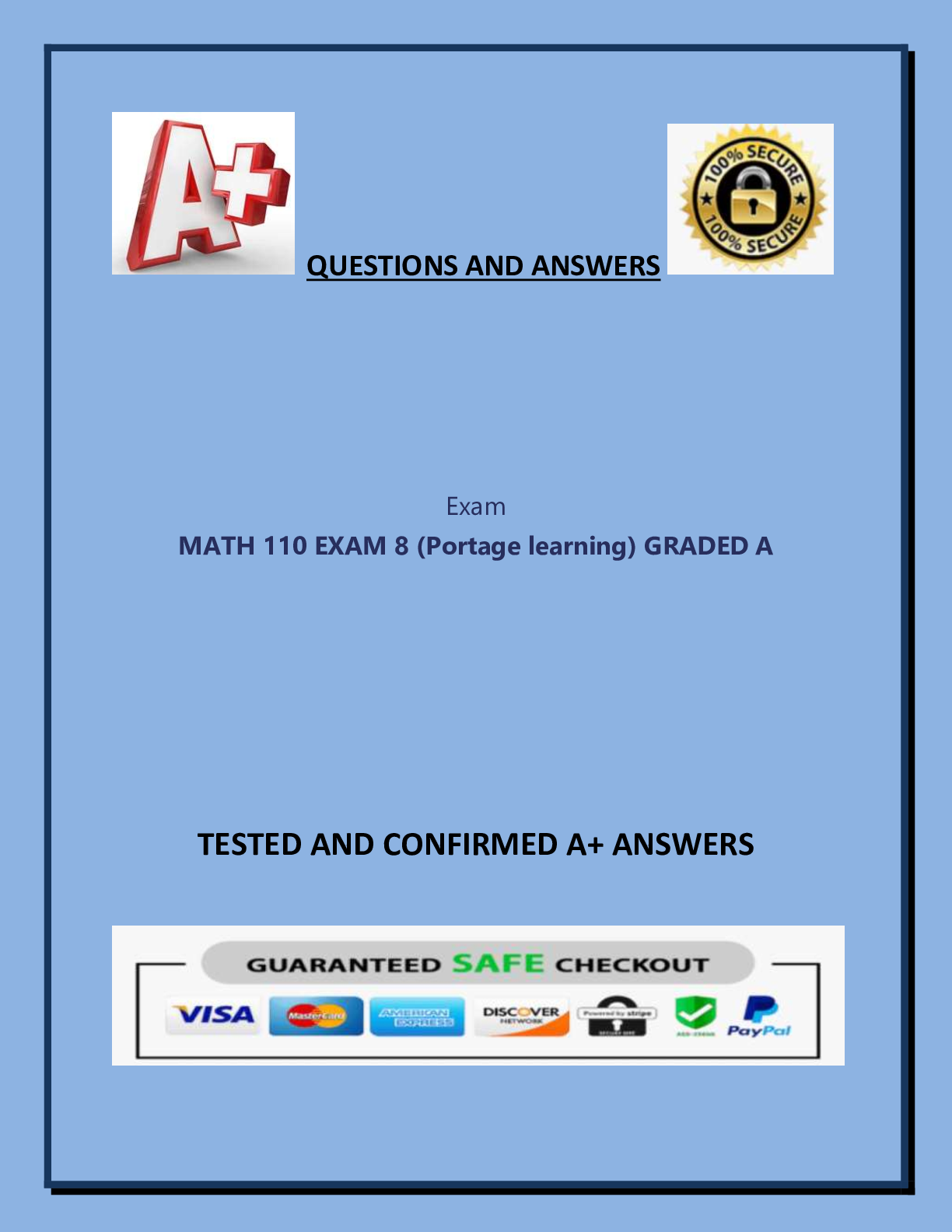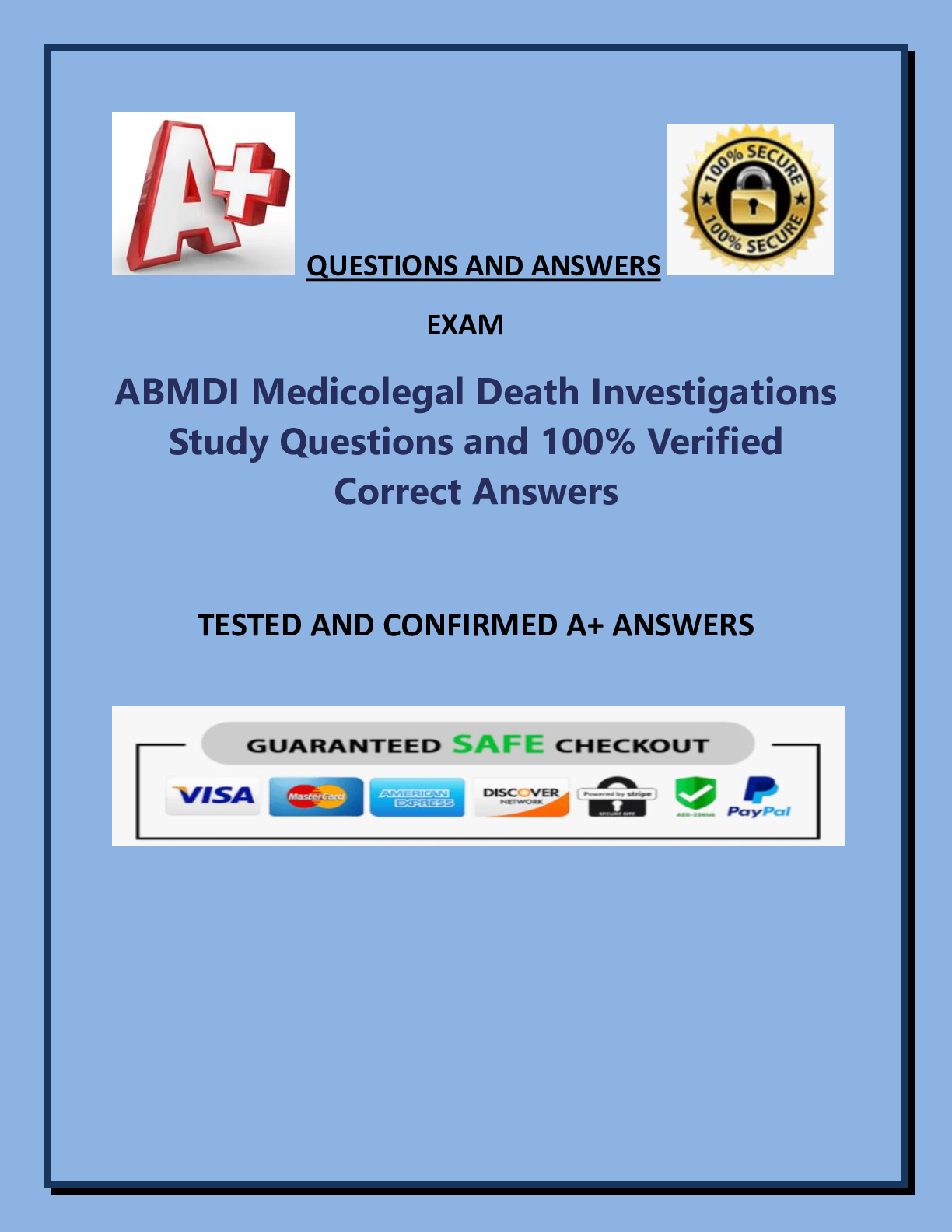*NURSING > A Level Question Paper > GSCM 209 Final Exam, Latest complete solutions (All)
GSCM 209 Final Exam, Latest complete solutions
Document Content and Description Below
TESTED AND CONFIRMED A+ ANSWERS 1) (TCO 8) What are the three parts of a wait-line system? The Three parts of a wait line system involves 1. Arrivals or inputs to the system. These have characteris... tics such as population size, behavior, and a statistical distribution. 2. Queue discipline, or the waiting line itself. Characteristics of the queue include whether it is limited or unlimited in length and the discipline of people or items in it. 3. The service facility. Its characteristics include its design and the statistical distribution ofservice times 2) (TCO 9) What limits the use of a graphical solution to LP? Linear programming is applicable only to problems where the constraints and objective function are linear i.e., where they can be expressed as equations which represent. In real life situations, when constraints or objective functions are not linear, this technique cannot be used. Moreover weather conditions and other uncertainities are also not taken into account . 3) (TCOs 11 and 12) What are third and forth steps in the simplex solution procedure? The third step is to Convert all the inequations of the constraints into equations by introducing slack/surplus variables in the constraints. Put the costs of these variables equal to zero. The fourth Step is to Obtain an initial basic feasible solution to the problem and put it in the first column of the simplex table 4)(TCO 10) In LP, what is the feasible region? In Linear programming a feasible region is the set of all the possible points of an optimization problem that satisfy the problem's constraints, potentially including inequalities, equalities, and integer constraints. a feasible region, feasibleset, search space, or solution space is the set of all possible points (sets of values of the choice variables) of anoptimization problem that satisfy the problem's constraints, potentially including inequalities, equalities, and integer constraints. 5) (TCOs 15 and 16) Define PERT and CPM. A PERT Chart or Program Evaluation and Review Technicque is a project management tool which has been designed to analyze, schedule and coordinate the tasks within a given project. A CPM or critical path method is a project management technique which defines the critical and non-critical tasks with the goal of preventing time-frame problems and process bottlenecks. The CPM is ideally suited to projects consisting of numerous activities that interact in a complex manner [Show More]
Last updated: 2 months ago
Preview 1 out of 7 pages
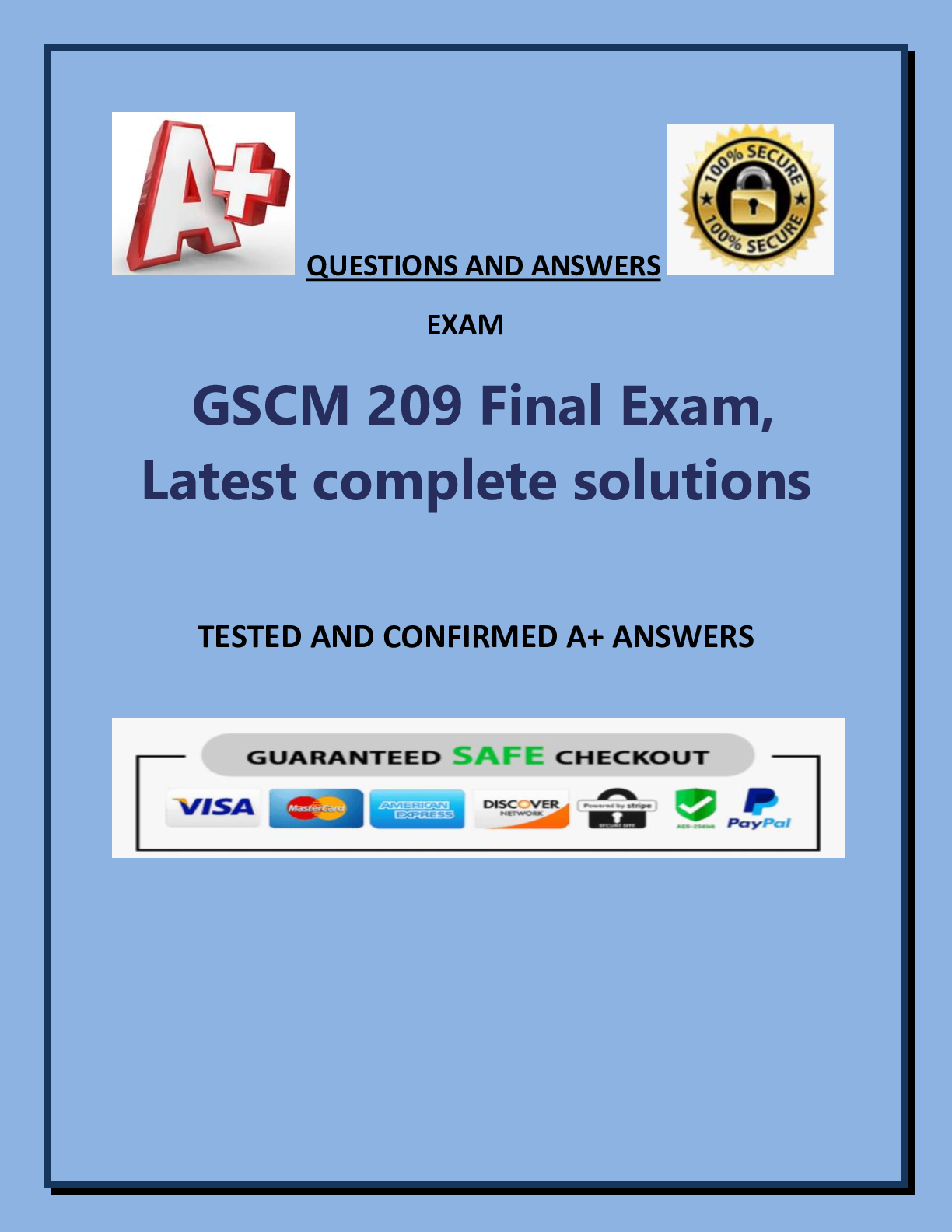
Buy this document to get the full access instantly
Instant Download Access after purchase
Add to cartInstant download
We Accept:

Reviews( 0 )
$15.00
Document information
Connected school, study & course
About the document
Uploaded On
Apr 09, 2024
Number of pages
7
Written in
Additional information
This document has been written for:
Uploaded
Apr 09, 2024
Downloads
0
Views
16

